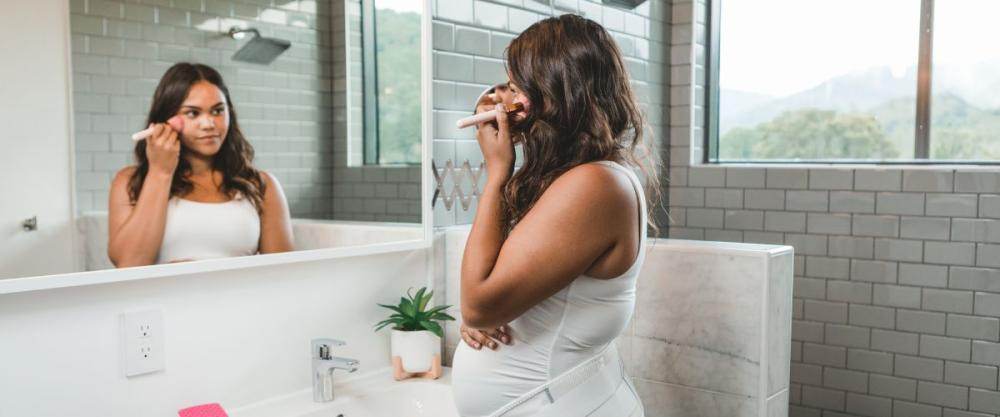What are Your Rights?
For the sake of breast milk supply and the health and integrity of the mother and her breast tissue, pumping sessions should frequently occur, mimicking the natural feeding patterns of a breastfed baby.
“Federal law requires employers to provide reasonable break time for an employee to express breast milk for her nursing child for one year after the child's birth each time such employee has need to express the milk. See Section 7 of the Fair Labor Standards Act (FLSA).”
The biggest thing to plan for is having a conversation with the employer, where applicable, to discuss the timing of pumping breaks and intervals to incorporate pumping into the schedule and where a clean, quiet place would be to pump. Develop a pumping plan with your employer that applies to the place of employment, prioritizes sanitation, and positively reinforces why it's good to take care of nursing moms in the workplace. Compromising should only be in the context of achieving your career goals, not your health and lactation needs.
Break Time for Nursing Mothers: Its a Health Care Requirement
When returning to work, pumping should occur every 3-4 hours. Waiting too long increases the chances of lessened supply over time and the risk of clogs and complications with that, such as infection. While on maternity leave, discuss time and a clean place to pump with your employer. In addition, discussing ways to stay on the clock while pumping and breaking up break times may help.


“Rigid break times can be redesigned in to smaller sections. Floaters and management can also step in when needed. “Reasonable time” is required by law to pump.”
Break up break times into 15 to 20-minute intervals every 2-3 hours. Hands-free pumping may also be a great tool to implement, using a bra that supports that or making your own by cutting out holes in a sports bra just big enough for the smaller end of the funnel on the flange to fit through. This hack allows pumping as often as needed while keeping your hands free to get your work done or enjoy your morning coffee.
Pumping is also a good time to snack and hydrate, as lactating uses up a lot of calories, which is energy. You will feel tremendously better when your energy levels are fueled for your day. Opt for nutrient-dense options like granola bars, fresh blueberries, mixed nuts, etc.
Not the Bathroom
Bathrooms are a place to eliminate waste from the body and wash hands afterward to prevent the spread of germs and diseases. Breastmilk is food and should be handled in the same way other food is handled. Bathrooms are not sanitary places to prepare and handle food of any kind. And if anyone needs reminding, breastmilk is food. (Tell whoever needs that reminder the federal law and your friendly neighbor lactation consultant said so.)
In the past, mothers were forced to use bathrooms to pump because there was no other private space available when it was time for a mother to express milk. “Private” means that other people cannot see an employee while she is pumping breastmilk. Pumping is not something that all moms can do discreetly under a cover, in the way a baby can be breastfed discreetly in public. Breastfeeding mothers need space that is not a bathroom to express milk in a clean and private environment.
Ideas to ensure private pumping spaces: Lockable doors, screens, curtains, “Do not disturb” signs
Even businesses with little space can support a mother’s breastfeeding goals and comply with federal regulations under FLSA. A functional area is usually large enough for a chair and a flat surface for the mother’s breast pump. In addition, flexible and temporary options, such as allowing the employee to use a manager’s office or screening off a small area, often work well. Some companies even partner with neighboring businesses to share lactation space for nursing moms.
How to Make Your Workspace Work
Other things to think about are milk storage. Do you need a cooler and ice packs, or do you have access to a refrigerator? Do you have an outlet for an electric pump, or will you need a battery-reliant pump? Does your place of employment have a lactation room?
Remember that what you pump does not necessarily equal your actual supply. Until mothers get comfortable with pumping and responsive to pumping, sometimes it can be difficult to pump out what you need right away. Milk production is primarily a hormonal function. Find a way to make the space your own and implement as many comfort measures as possible to relax your body and respond well to the pump.
Implementing Pumping Schedules


Pumping can look different from family to family, as needs and amounts will vary. For a mom who is feeding well exclusively at the breast and intends to stay home indefinitely, pumping will be an occasional task, while a mom who goes to work will need to implement a plan for part-time pumping. Exclusive pumping is a different task entirely.
To protect your milk supply, pumping should imitate the baby’s natural feedings in frequency and amounts. Select a breast pump to fit the task. Something else to consider is the amount to expect while pumping, as babies will often drink more at the bottle versus the breast in one sitting if not paced well. For example, a baby 3-4 months of age could easily down a 4-6 oz bottle, but mom may only pump 3 oz. This is an appropriate pumping amount; pacing the feeds and feeding more frequently will help mom meet her goals.
When returning to work, it's essential to start implementing pumping at least 1-2 times a day for about 1-2 weeks before returning to work. Doing so allows a stash to begin accumulating and time to work out any kinks, such as flange sizing and practice with the pump. Store any pumped milk in 2-3 oz bags to help minimize waste upon usage. Babies will need approximately 1-1.5 oz every hour, separated from mom. For example, a mom with a 30-minute commute and an 8-hour workday will need 9-13.5 oz/day of milk for the baby. This variance will depend on the baby's age and the care provider's practices.
Other Resources for Pumping and Breastfeeding Employees
U.S. Department of Labor
The U.S. Department of Labor’s Wage and Hour Division is responsible for enforcing the Fair Labor Standards Act and provides compliance assistance on federal requirements under the law. This includes the full language of the law and all provisions and information on how to comply. For more information, visit the Department of Labor website or call 1-866-4-USWAGE (1-866-487-9243).
HealthCare.gov
Most insurance companies are required to cover breastfeeding support, counseling, and equipment for the duration of breastfeeding. This includes covering the cost of a breast pump and help or counseling from a health care professional about breastfeeding.
Del Bono, E., & Pronzato, C. D. (2012). Does Breastfeeding Support at Work Help Mothers and Employers at the Same Time? (PDF, 417 KB) Institute for the Study of Labor (IZA) Discussion Paper No. 6619.
Information provided in blogs should not be used as a substitute for medical care or consultation.







